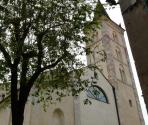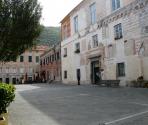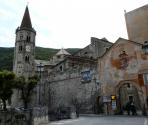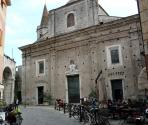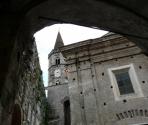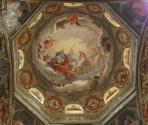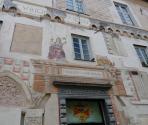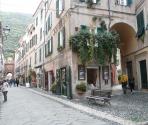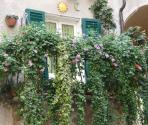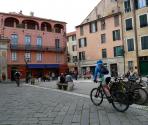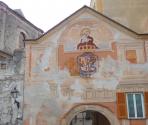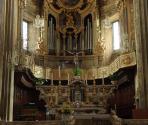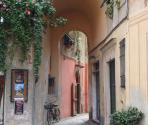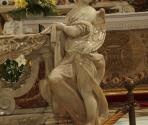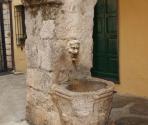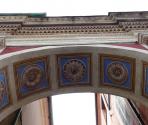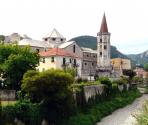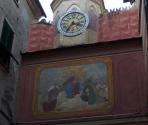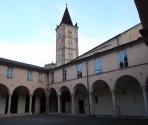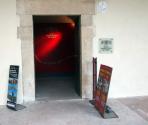Finalborgo

The historic centre of Finalborgo, the ancient Burgum Finarii, was for many centuries the capital of the Marquisate and the administrative centre of Finale. It is situated in a strategic position on an alluvial plain at the confluence of the Pora and Aquila rivers. Finalborgo was thought to have been founded around the end of the 12th century, at the time of Marquis Enrico il Guercio. Recent important archaeological discoveries, however, date back its foundation to some centuries before.
Finalborgo is a walled town characterized by its 15th century structure established following the war with Genoa. The surrounding walls, destroyed in 1448 and rebuilt in 1452 are interrupted by semicircular towers (the finest is located at the south) and pierced by several “gates”.
The gates are:
Porta Reale (Royal Gate), built in 1702, near which there is a big Del Carretto coat of arms in high relief, and Porta Romana (Roman Gate), Porta Testa (built in 1452), Porta Mezzaluna (on the way up to Gavone Castle) and finally the semicircular towers (the finest is located south) make Finalborgo a walled town, characterized by its 15th century structure, after the destruction following the war with Genoa (1448).
The 15th century and Renaissance palaces, transformed under the Spanish domination, embellish the town.
The main ones are:
- Town Hall, first belonging to the Ricci family, which is one of the best examples of early Renaissance architecture in Liguria.
- Cavassola Palace (17th century, where Pope Pius VII lived) and The Gallesio Palace in Gallesio street.
- The Burnengo Palace in the Aicardi square, with its double arched loggia (Raimondo’s Loggia) and big family coat of arms, now barely visible.
- Court Palace in the square of the same name (Seat of the Del Carretto family, then of Spanish and Genoan governors, afterwards of the Court of the District, and finally of the magistrate’s court) whose façade shows the transformations undergone in various periods.
- Messea Palace and Arnaldi Palace (fine example of Baroque style façade, with extraordinary stuccoworks) in the same square.
- Chiazzari Palace in Doria square.
Events: art exhibitions, concerts, sports' events and activities for children, cultural meetings, and much more

